Spotlight on Jarod Opperman
Jun 4, 2014
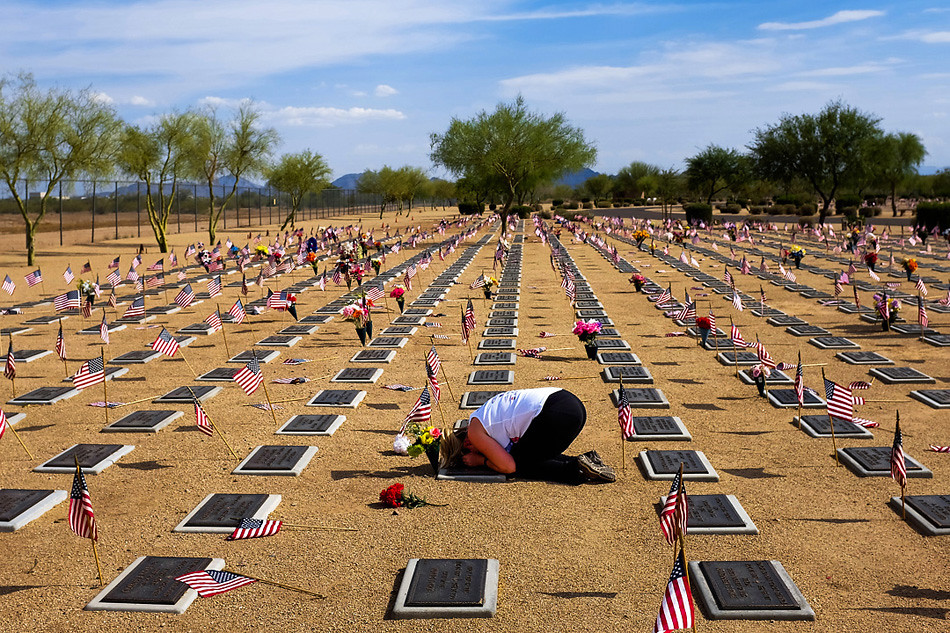
TID:
This is a very moving image, please tell us a little of the backstory.
JAROD:
First, it would be ridiculous of me to not to say thanks for inviting me to be a part of this. The Image, Deconstructed has been a valuable resource to me for years now and I'm humbled to be included where so much beautiful work and knowledge has already been shared.
This image came about through an otherwise routine daily assignment during Memorial Day weekend. The woman pictured, Jami Johnson, was speaking at an annual ceremony/motorcycle ride from Glendale to the National Memorial Cemetery of Arizona in Phoenix. Jami's brother, Pfc. John C. Johnson (Corey), had been killed in action in Afghanistan on Memorial Day in 2011. Since then, Jami had been a major part of the ride, which started that year. The event was scheduled for Saturday. Late Thursday night, the reporter who was working on the story sent me an email asking me to make some sort of portrait of Ms. Johnson for the story, which would run Monday. Almost offhandedly, the reporter mentioned that Jami would be going to her brother's gravesite Saturday following the ride and the event after party.
I left Jami a voicemail Friday morning asking if I might be able to join her at the cemetery, but I didn't hear back. Saturday, while working on covering the ceremony and ride, Jami found me in the crowd and told me that our reporter had mentioned that I wanted to make a portrait of her. I told her I'd be happy to do a portrait, but asked if I might accompany her later that afternoon to her brother's gravesite. I always over think these encounters and have everything I think I may need to say ready to go, but I didn't need it. Jami was immediately receptive, super friendly and agreed to let me tag along. I didn't have any other assignments that day, so I gave her my card and told her to just give me a 20-30 minute heads up as to when she was going to head out there.
TID:
What sort of mental preparation did you have going into this scene?
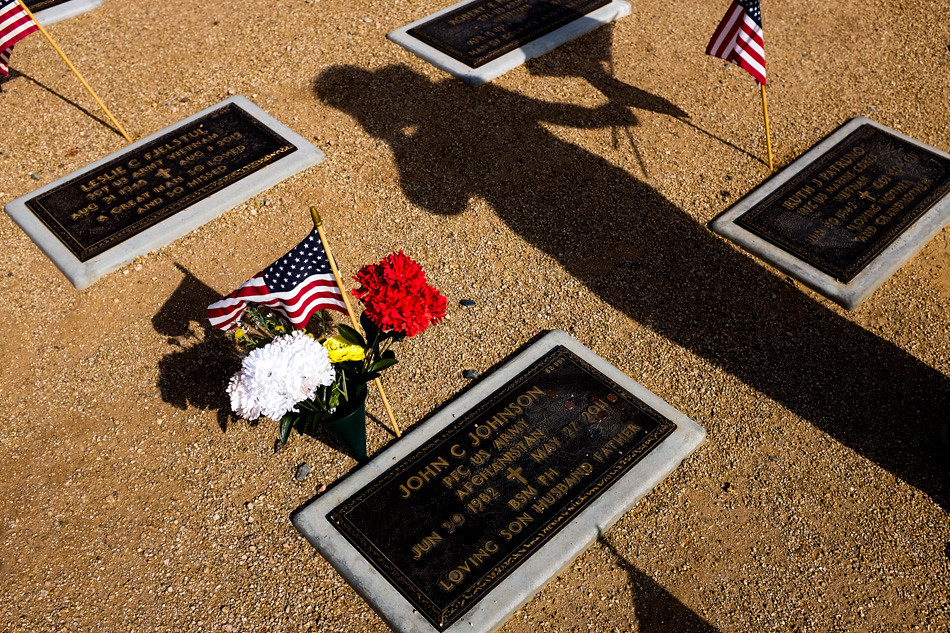
JAROD:
Well, when I got the text from Jami saying she was headed out to the cemetery, I immediately hopped in my car and drove over. I ended up arriving about 30 minutes before she showed up, so I choose to walk a bit around the cemetery. I'd never been to a National Memorial Cemetery before and I was taken aback a bit by how serene it was. It was breezy that day and as I was taking in all the little flags that had been placed above each headstone, I noticed a bunch had been blown over. I ended up walking across a couple rows of headstones, picking up flags and putting them back in the ground. It was oddly meditative and it kind of helped put me in the appropriate mood for the shoot. Truthfully though, it's been my experience that in working for newspapers, you rarely get time like this to adjust your mood for the situation. I remember on my last day as an intern at The Register-Guard in Eugene, Oregon in 2009 I had 3 assignments. Sandwiched between a football and a volleyball practice, I was assigned to a memorial service for a homeless man who had been fatally stabbed. In those kinds of situations, two things have helped prepare me for the emotional ups and downs of the day:
First, my car becomes my place to meditate on the situation. Normally, I'm blasting music and rocking out pretty hard, but on that day I just drove in silence. I think when we're alone, a lot of us (me, in particular) find ways to drown out our own thoughts or distract ourselves and we miss opportunities to have conversations with ourselves and reflect. On my way to these assignments that are a bit heavier, I like having that time to discuss things with myself such as "what kinds of photographs am I trying to make, why am I making them, what's the overall point of even being here, etc.," because I know that if I can't answer those questions, I probably shouldn't be there at all.
Secondly, if time allows, I show up early. 30 minutes, if possible. The reason is two-fold: You have to expect that important moments usually happen outside of our scheduled opportunities, and being early and staying late allows for you to witness those moments. Also, being there early and not taking photographs gives me an opportunity to talk to the people who are there and learn more about the story than the assignment tip provides, which I think also helps quell the assumptions that I'm some bloodthirsty, glory-hungry photographer who's just looking to get famous/make money. This is also another reason to reflect on the questions I pose to myself, as I stated earlier. If you can't provide an answer to those to yourself, how the hell are you going to explain your reasons for wanting to document someone's pain/anger/frustration/sadness to someone else?
TID:
What challenges did you encounter while working to make this image, especially at the beginning?
JAROD:
We hadn't really discussed it, but in my head I had assumed I would be meeting Jami and maybe a few close family members. When she met me, I realized it was just her and her boyfriend, who she'd been dating for only a little over a year. What I had assumed would be a very personal moment suddenly felt even more private. I have a ton of social anxiety. I'm talking cold sweats, stumbling over words and general unexplainable fearfulness when talking to new people. People often say not to, but I like to create loose plans for assignments to help calm my nerves, and when something I've planned for changes, re-working the plan gets my anxiety going again. So as I'm following Jami to the gravesite, I'm re-evaluating the situation, mostly coming to terms with the fact that with so few other people there, my presence is going to be that much more obvious. As we park our cars near the site, I notice Jami and her boyfriend aren't getting out immediately. I head to the back of my car to get my gear out. As I'm throwing straps over my shoulders, I see through my peripheral that Jami has already started to walk to the headstone, alone. Her boyfriend was hanging back by the car. The "be there" part of being a photojournalist kicked in and I started jogging to catch up with Jami. I probably only got about two strides in before Jami dropped to her knees and began sobbing uncontrollably. I stopped in my tracks, hesitating on whether I should impose on such a sensitive moment. I have great respect for people's privacy and I never want to simply assume that prior consent overrides a subjects current feelings about being photographed.
TID:
How did you handle and overcome these problems?
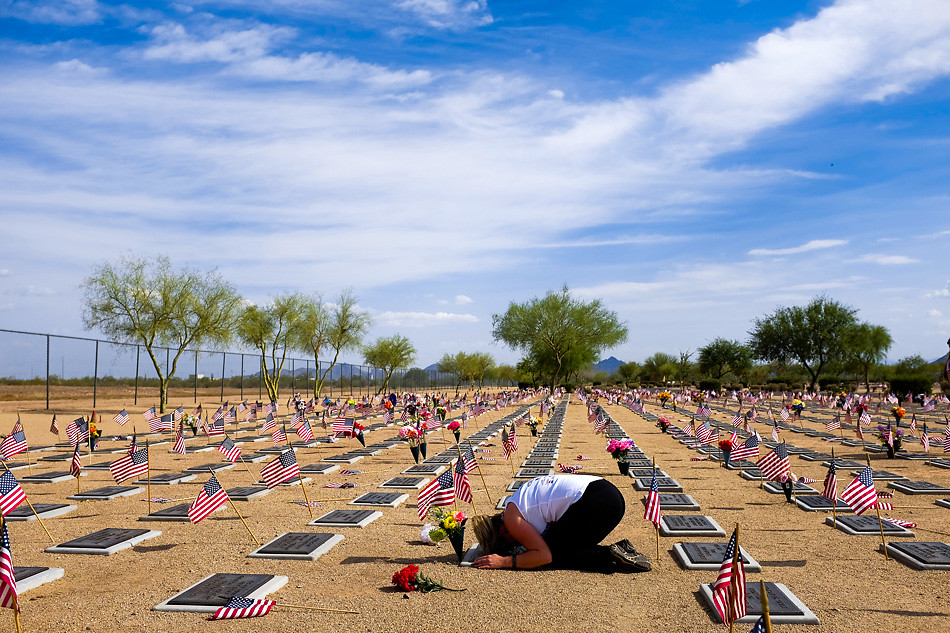
JAROD:
First, I quickly ran through my questions to myself again. What ultimately convinced me to make the photograph then was acknowledging that this moment would most fully convey the love this woman had for her brother and the pain she continues to have, even 3 years later, because of his death. Memorial Day's status as a day off from work and the unofficial beginning of summer sometimes takes away from the significance of what is truly a somber holiday. I wanted a photograph that supported to original intent of the holiday; a remembrance of lives lost.
I still wanted to remain as unobtrusive as possible, so I ended up setting my cameras down on a nearby bench. I pulled out the x100s I keep in my bag for just such a situation. It's quiet and feels way more appropriate than the slapping sound of my other cameras. If I was going to impose on that situation, I wanted to at least prevent Jami from feeling compelled to adjust her reaction because she was being photographed.
TID:
Now, onto the moment. Can you talk about the moments leading up to the picture and also the actual moment.
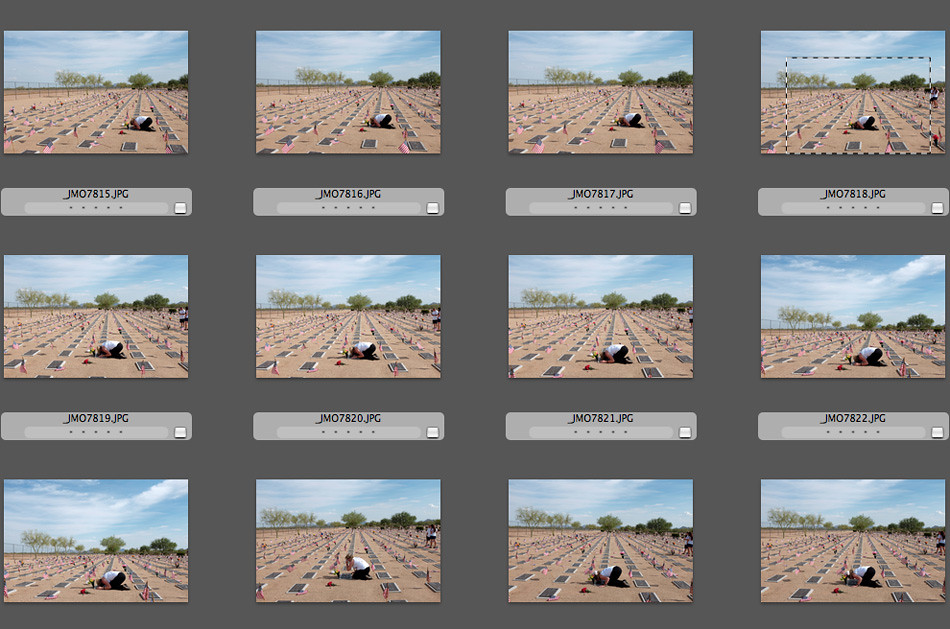
JAROD:
The first thing I knew I wanted emphasized, besides Jami obviously, was the seemingly endless rows of headstones and flags. When I arrived at the cemetery, it was all the flags blowing in the wind that made the place feel especially quiet and even a little bit peaceful. In contrast to that, Jami's crying was this heart-wrenching break in the center that silence. I initially composed to avoid a couple people who were standing to the right, but the composition didn't support my initial reaction to the scene. I decided to place Jami in the center of the frame, capture the moment, then take a few steps forward to better avoid the couple to the right. I know that all probably sounds like a lot of over-thinking, but I've been making an effort to photograph more from intuition and feeling, as in the past my processes have been very mechanical and trained. The actual moment, the photograph I went with for the paper (after lots of deliberation and lots of opinions from colleagues) worked as a photograph in part, I think, because it was my gut reaction to that scene. Other images made later on were perhaps more technically correct, but seemed to lack the sentiment of that one.
As you can see, the photograph I ended up going with was only the fourth that I shot, but I continued to take a few more with the same composition, assuming that slight changes in Jami's body language might lead to a more meaningful image. As Jami's boyfriend came to console her, I made some similar images, but soon adjusted to make a distinctly different photograph, for the sake of some visual variety if we needed more images in the paper. These images became important too, as I soon learned that this was the first time Jami had taken her boyfriend to her brother's grave site.
TID:
What surprised you about the moment?
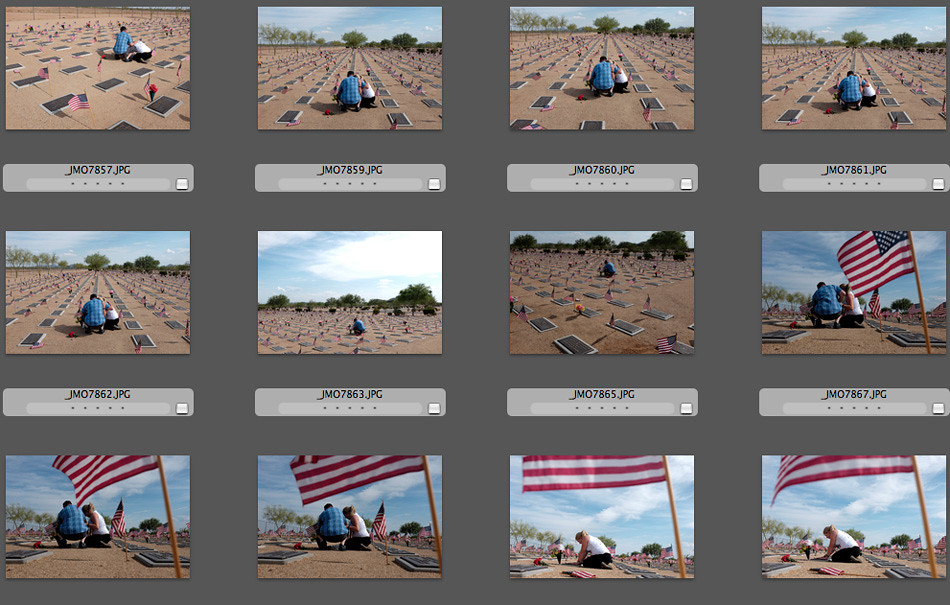
JAROD:
I think what surprised me the most, at first, was how quickly Jami reacted upon reaching her brother's headstone. She met me at the entrance with a smile. I followed her and her boyfriend in my car and the next time I saw her, she's on the ground crying harder than I've ever seen anyone cry. And it was clear, at that moment, that the world outside of her and her brother's resting place didn't exist for her. If I had been standing right next to her, I'm not sure she would have even noticed me. It's always humbling to be a witness to those types of moments.
TID:
What have you learned about yourself in the process of making images
like this?
JAROD:
You know, I used to get really down on myself for letting my anxiety and my concern for my subjects' comfort create hesitation while photographing. Like, I thought that if I hesitated, I was ultimately missing the moment and making a subpar photograph. And maybe that has been the case a couple times. But realistically, that hesitation is short and sometimes I need that short moment to make sure the positives still outweighs the negatives. I think that's important in maintaining my humanity as a photographer.
TID:
What have you learned about others?
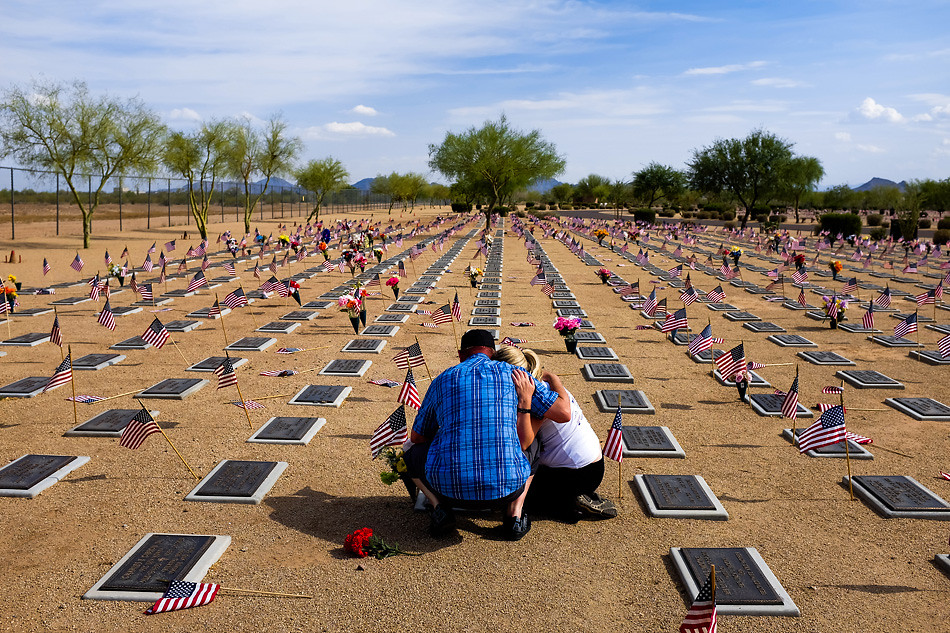
JAROD:
I've found most people actually respond really well to being photographed in tough and emotional situations, if you believe in the importance of those photographs, can properly explain that to them and are sensitive to your subjects throughout telling the story. I've met photographers who have gotten upset about not being given access or have tried to twist their subject's arms into getting that access, but truthfully, it's a privilege to be allowed into a stranger's life, particularly during tough situations, and I think we should always be aware of the fact that we never deserve to be there.
TID:
In conclusion, what advice do you have for photographers?
JAROD:
I'd say take this all with a grain of salt, because I rarely feel like I know what I'm doing at all. That said, I think that it's important to frequently have a dialogue with yourself; about your motives, your reasoning, your goals, your feelings, your subjects' feelings, your successes and failures, and your wants versus your needs. I think photojournalism is equally about being a person as it is about being a photographer and these discussions have helped me grow and learn about myself.
And then just fucking relax. I ended up quitting photography for over 2 years because I stressed myself out so much thinking that my photography somehow defined me and, at the time, I wasn't producing like I thought I could. Occasionally, large improvement comes suddenly and at once, but most of the time it's a slow trickle of learning by doing. The trick for me lately has been to just keep finding ways to enjoy myself, regardless of the kinds of photographs I make.

:::BIO:::
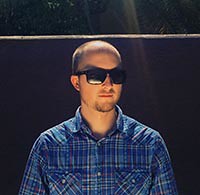
Jarod Opperman is a staff photographer at the Daily News-Sun in Sun City, Arizona and a graduate of the University of Oregon. He unsuccessfully walked away from photography in 2010, working as a restaurant server at a retirement community in Portland, Oregon before being drawn to photography again in 2012. Previously, he interned with The Hutchinson News in Hutchinson, Kansas and The Register-Guard in Eugene, Oregon. He was recently named 2013 Arizona Community News Photographer of the Year. Previous to that, he was probably best known for an audio slideshow titled "A Tribute to Ref Ass." Jarod likes beer, anything nerdy, and his dog, Casper.
You can see more of his work here:
Weblinks: www.photopperman.com
Twitter:@photopperman
Instagram: @photoppermanj